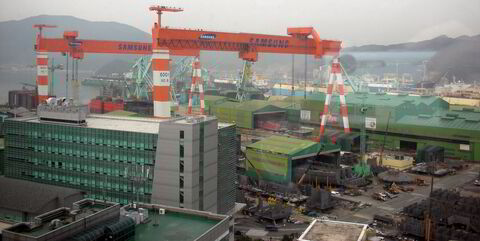As crude tanker rates continue ticking up, Clarksons Securities wants to remind you seasonality is real.
Analysts at the investment bank cited Euronav data demonstrating that Opec production cuts boosted freight rates in seven of the past 11 fourth quarters.
“Seasonal demand factors can explain this increase,” Clarksons’ Frode Morkedal said.
With VLCC and aframax rates rising as northern hemisphere temperatures drop, Morkedal said many investors “do not always fully believe in seasonality”.
He said the reality is that Saudi Arabian crude exports shift with the weather: the summer there prompts greater air conditioning usage and siphons off barrels from the international market.
Once temperatures fall, more barrels become available for export alongside rising demand from refineries coming out of maintenance season.
“Winter also brings its own set of inefficiencies, such as adverse weather and longer wait times at ports and canals, driving up freight rates even further,” Morkedal said.
Clarksons’ daily weighted average for VLCCs hit $37,000 per day on Monday, a 74.8% rise week over week, with a scrubber-fitted eco VLCC on the Middle East Gulf to China route shooting up 105% to $38,100 per day.
The broker’s fleet weighted average for suezmaxes jumped to $32,900 per day — a rise of 21.9% from last week. The fleet weighted average for aframaxes rose by 15.8% to $25,900.
Aframax rates were headlined by an 81.5% week-over-week jump on the cross-Mediterranean route to $28,300 per day for a scrubber-fitted, eco-designed ship.
Product tanker rate growth was more muted, although rates for LR2s and LR1s are nearing their year-to-date averages. The fleet weighted average is $37,600 per day for L2s and $36,300 per day for LR1s.
Morkedal said it is not clear how the temporary ban on Russian diesel exports will hit the market, echoing the thoughts of other market observers.
The Clarksons analyst said tonne-miles may be neutral if supplies in the Middle East make up the shortfall in global supply created by the ban. Otherwise, tonne-miles could drop by as much as 6%.
“An increase in Chinese exports could even result in a net positive impact on tonne-miles of a few percentage points,” he said.
“In summary, while the export ban has caught attention, its impact is likely to be temporary and relatively short-lived. The rerouting of supplies could be neutral to tonne-miles in a base-case scenario and potentially positive if more shipments to Europe come from the Far East.”





